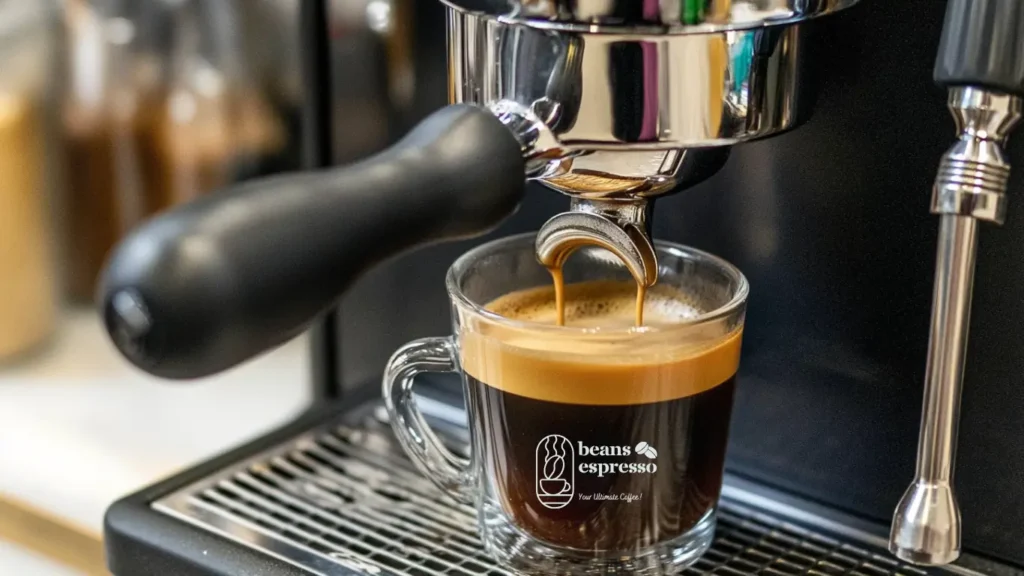When crafting the perfect cup of espresso, the type of machine you choose can make all the difference. Whether you’re a coffee enthusiast striving for barista-level control or looking for quick and consistent caffeine fixes, understanding the distinctions between manual vs automatic espresso machines is key to finding your match.
In this guide, we’ll explore the pros and cons of these two types of machines, helping you make an informed choice based on your preferences, budget, and lifestyle. Let’s dive into the world of espresso and uncover which machine is right for you.
What Are Manual Espresso Machines?
Manual vs Automatic Espresso Machines. Manual espresso machines, often referred to as lever machines, are the epitome of craftsmanship and control in coffee brewing. These machines require the user to manually operate a lever to extract espresso, which can be both challenging and rewarding.
How Do They Work?
Manual machines rely on the user to:
- Heat the water and load the coffee grounds.
- Pull or press a lever to create the pressure needed for extraction.
- Adjust parameters like grind size, tamping, and extraction time for optimal flavor.
They’re ideal for those who enjoy the process as much as the product. Popular models, such as the La Pavoni Europiccola, showcase the artistry behind this machine type.
Pros of Manual Espresso Machines
- Full Control Over Brewing: Adjust every aspect of the process, from pressure to temperature, for a truly customized cup.
- Superior Flavor Potential: Mastering these machines can yield an espresso richer and more nuanced than automated systems can achieve.
- Aesthetic Appeal: These machines are often beautifully designed, doubling as kitchen centerpieces.
Cons of Manual Espresso Machines
- Learning Curve: It takes time to master the art of pulling consistent shots.
- Time-Consuming: Preparing espresso manually requires focus and patience.
- Maintenance Needs: Regular cleaning and upkeep are necessary to maintain performance.
What Are Automatic Espresso Machines?
Automatic espresso machines simplify the brewing process, making them a popular choice for busy professionals and coffee lovers new to espresso-making. These machines come in three main types:
- Semi-automatic: Users control some elements, like grinding and tamping.
- Fully automatic: Machines handle most steps but require user oversight.
- Super-automatic: Fully hands-free, often with built-in grinders and milk frothers.
How Do They Work? Manual vs Automatic Espresso Machines
Automatic machines automate the brewing process by controlling water flow, pressure, and timing. With just the press of a button, you can enjoy a consistent cup of espresso every time.
Seel Also Coffee Capsules: Types and Benefits
Pros of Automatic Espresso Machines
- Ease of Use: No advanced skills are required; just press a button and let the machine do the work.
- Consistency: Delivers the same quality shot each time, perfect for those who prioritize reliability.
- Extra Features: Many models include built-in grinders, milk frothers, and programmable settings.
Cons of Automatic Espresso Machines
- Less Customization: Limited control over brewing parameters compared to manual machines.
- Potential Malfunctions: With more moving parts and electronics, these machines are prone to breakdowns.
- Higher Costs: Super-automatic machines can be expensive upfront.
Check more info here
How to Choose Between Manual and Automatic Machines
When deciding between manual and automatic espresso machines, consider the following factors:
1. Your Experience Level
- Beginners might prefer the ease and consistency of automatic machines.
- Enthusiasts and seasoned coffee lovers might relish the challenge and control of manual machines.
2. Budget
- Manual machines typically have a higher initial cost, but they last longer with proper care.
- Automatic machines range from affordable semi-automatic models to high-end super-automatic machines.
3. Lifestyle
- Do you have time to dedicate to the brewing process? If not, an automatic machine may be better suited to your busy mornings.
- For those who see espresso as an art form, the manual option is unbeatable.
FAQs: Manual vs Automatic Espresso Machines
What is better for beginners: manual or automatic?
For beginners, an automatic espresso machine is generally easier to use and more forgiving, making it the better choice.
Does coffee taste better from a manual machine?
Manual machines allow for greater customization, which can result in a richer and more tailored flavor. However, this depends on the user’s skill level.
Are manual machines more durable?
Yes, manual machines often feature simpler mechanics and fewer electronic parts, making them more durable over time.
Conclusion: Which Machine is Right for You?
Ultimately, the choice between manual and automatic espresso machines comes down to personal preference. If you value control, craftsmanship, and flavor customization, a manual machine is the way to go. On the other hand, if you’re seeking convenience, speed, and consistency, an automatic machine is likely the better fit.
Regardless of your choice, both types offer a unique way to enjoy espresso at home. Explore your options, consider your priorities, and start your espresso journey today.
Which espresso machine do you prefer? Share your experiences or ask questions in the comments below! Manual vs Automatic Espresso Machines

